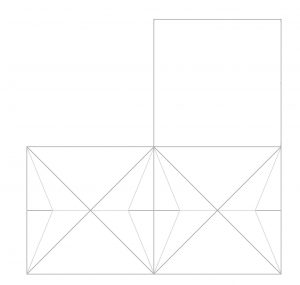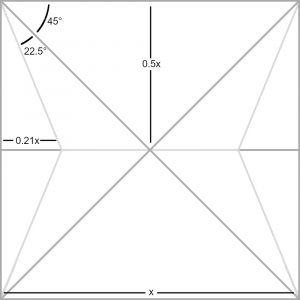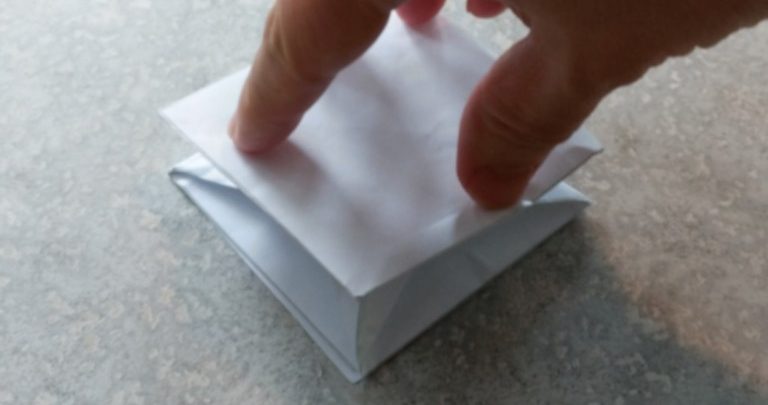
A bit of background on this:
In 2008, Mythbusters made a lead balloon. To construct the balloon, Adam taped together a stack of square lead foil sheets, assembled in such a way that, when inflated, the sheets would unfold into a cube.
And it worked! The cube’s sides unfolded, and the top of the cube rose to its full height, executing a quarter-twist in the process (starting at about the 1:30 mark). Very nice and elegant.
But it started to bug me. There must be some way, I thought, to fold the sides of a cube so that the entire thing can collapse or expand without the top rotating.
After several tries, I came up with a design, constructed one out of paper, and tried it out. Satisfied that it worked, I promptly forgot about it.
Then, a few days ago, it started to bug me again. No idea why. I dug through my files, looking for the design, and couldn’t find it. And I had only a vague recollection of what it looked like. It took me a couple of days of playing with scraps of paper before I hit on the original design.
Here’s the cube in various stages of collapse. Yes, it’s a bit wonky. Probably would work better if I’d used a more rigid material, but paper’s good enough for a proof of concept.
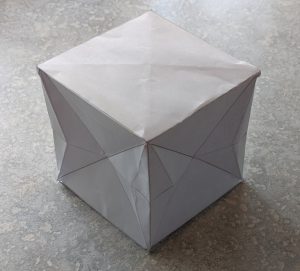
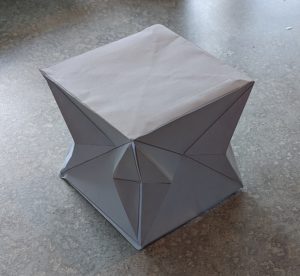

I can’t think of a practical purpose for this thing. But, hey, sometimes you just feel strangely compelled to make something just for the sake of making it.
Here’s how it works:
- The center of each side pushes in, forming the two large triangles (eight total).
- The center of each edge pushes in, forming a diamond (four total), joined to the large triangles by smaller obtuse triangles.
- As the cube collapses, each diamond folds in half, and the large triangles fold towards the center of the cube.
- When the cube is completely flattened, the tips of all eight large triangles meet in the center of the cube… erm, square.
Now, here’s the thing: I have never found an example of a cube being folded in this particular way. I don’t know if that’s because no one’s ever done it before, or if my Google skills are lacking.
On the other hand, I half-expect that, thirty seconds after this post goes live, someone will comment with a link to this exact configuration being used in something completely commonplace. “Oh, that’d be a standard Østberg bellows mechanism, most famously used in Houtman F37 “Flying Mongoose” steam engines from 1930 to 1937. I’ve got three of them in my garage.” Because of course.
If you want to make one yourself, here’s an image of three faces of the cube (two sides and either the top or bottom). You’ll need to print two copies to make a cube. The blank faces are top and bottom; the ones with crease lines are the sides.
